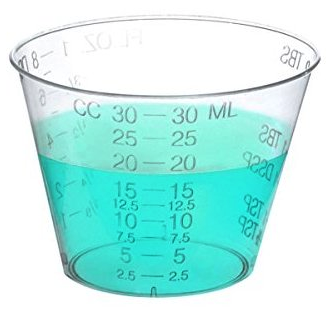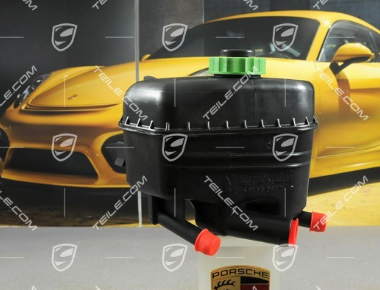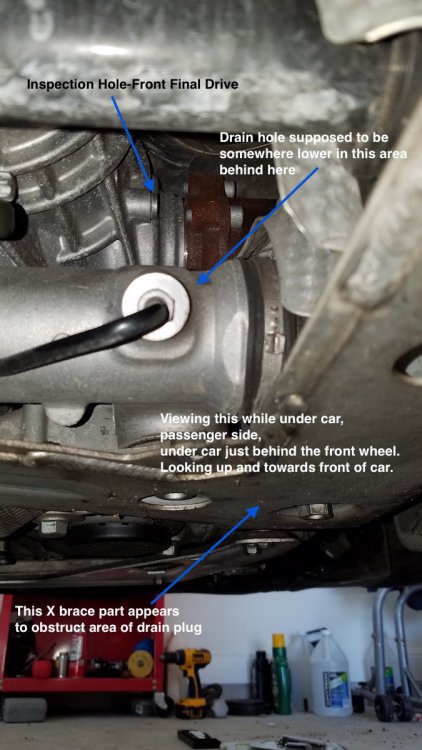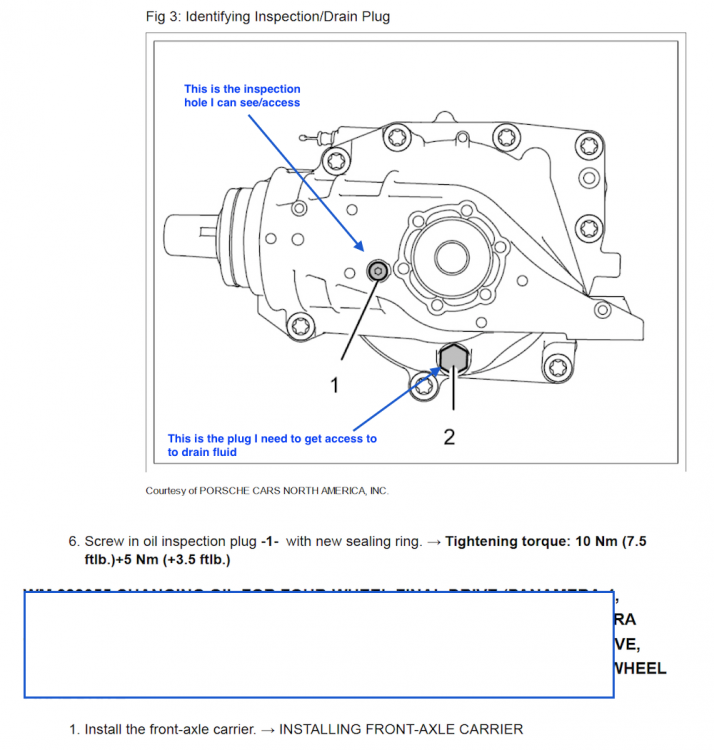Welcome to RennTech.org Community, Guest
There are many great features available to you once you register at RennTech.org
You are free to view posts here, but you must log in to reply to existing posts, or to start your own new topic. Like most online communities, there are costs involved to maintain a site like this - so we encourage our members to donate. All donations go to the costs operating and maintaining this site. We prefer that guests take part in our community and we offer a lot in return to those willing to join our corner of the Porsche world. This site is 99 percent member supported (less than 1 percent comes from advertising) - so please consider an annual donation to keep this site running.
Here are some of the features available - once you register at RennTech.org
- View Classified Ads
- DIY Tutorials
- Porsche TSB Listings (limited)
- VIN Decoder
- Special Offers
-
OBD II P-Codes - Paint Codes
- Registry
- Videos System
- View Reviews
- and get rid of this welcome message
It takes just a few minutes to register, and it's FREE
Contributing Members also get these additional benefits:
(you become a Contributing Member by donating money to the operation of this site)
- No ads - advertisements are removed
- Access the Contributors Only Forum
- Contributing Members Only Downloads
- Send attachments with PMs
- All image/file storage limits are substantially increased for all Contributing Members
- Option Codes Lookup
- VIN Option Lookups (limited)

ciaka
-
Posts
469 -
Joined
-
Last visited
-
Days Won
14
Content Type
Profiles
Events
Forums
External Paint Colors
Downloads
Tutorials
Links Directory
Collections
Store
Posts posted by ciaka
-
-
Recently did PDK transmission change on the PTT. Before doing so, did research for some time, trying to get some technical details about the process.
Have done this on my CTT as well a couple times. To be honest, many folks in CTT world (non PDK), were doing without PIWIS, and I have not heard of anyone having any issues.
The general process is:
- car up off ground but level
- drain old fluid measuring how much came out
- put in new fluid
- run through gears few times while stationary
- bring transmission to 40 deg. Celsius
- top up until fluid starts leaking out fill/inspection hole
-close off all plugs and put things together. Done.
My curiosity is around how precise does the fill have to be?
Surely, the car cannot tell difference in mL. Putting in 1/4 of a quart too much is 250cc or 250mL (thats one glass).
What is the level of precision needed for these fills? I have been reading that overfilling transmission can lead to issues like over pressurizing system, foaming, etc.
However the more I read, I find contradictions in each point.
For example - foaming.
Foaming can occur if oil is picked up by gears in overfilled transmission. Causes fluid to overheat and lose its lubrication properties. Can help damage transmission.
I found that Pentosine FF3 and other trans. fluids, all have anti foaming agents in them, preventing that exact behavior.
So if fluid has anti foaming, surely small amount of overfill will not be something to lose sleep over, or is it?
Another example, fluid expands as temperature increases.
PDK is to be filled to max at 40C. That is 104 deg. F.
Anyone who has Panamera can tell that the car is hot at run time. Once parked overnight, engine is still at about 85 deg F or 30deg Celsius in the morning.
So if I do PDK change in summer time, and ambient temp is 85F, how much can this fluid expand in 20 deg. F? I am sure it wont be a lot. Read below.
Looking into this further, there are charts showing thermal expansion of petroleum products.
These values are between 0.0007 and 0.001 (this is a coefficient value only to help calculate volume expansion).
Here is some mathematical stuff:
You can calculate thermal expansion of liquid by formula: dV = Vo β (t1 - t0)
- dV = change of volume
- Vo = Original volume (initial volume amount)
- β = coefficient of expansion, (m3/m3 oC, ft3/ft3 oF) - sample Chart Here
- t1 = final temperature (C or F)
- t0 = initial temperature (C or F)
Given above, we know for PDK:
- Vo = 8.5 (quarts = 0.284071 cubic feet - used typical change time fill quantity, at volume converted to cubit feet per coefficient of expansion)
- β = 0.001 (used worst case or most expanding coefficient - Petroleum...rage is from 0.0007 to 0.001 from chart - using values from the Celsius column since we use temp in that unit too)
- t1 = 40 Celsius (temp at time of top PDK up)
- t2 = 30 Celsius (cool engine summer time temp)
Mixing all this together, you get result of
0.284071 cu. ft ( (0.001)(40C-30C) ) = (0.284071 cu.ft.) (0.01) = 0.00284071 cu.ft = 0.08499994597403 quart (converting back to US quarts) = about 4cc (one fifth of a 20cc cup of cough medicine)
This cup shows you about 20cc of fluid, so 4cc is way less. Imagine adding that to your FFL3 fluid fill in PDK, sitting already at 8.5 quarts or 8044cc.

So looking at above, if you put in 8.5 quarts of FFL3 fluid into your PDK, while car is at cool temp,
once you heat the PDK to 40C, that 8.5 quarts will expand to be 8.50284071 quarts.
Meaning, the fluid will have expanded by about 0.99% or rounding off, to about 0.1%.
If that is true, then your 8.5quarts added, when heated, will become 8.5028 quarts, which is a minuscule amount of change, equivalent to about one hundredth of a glass, about 2cc worth.
If we assume that PDK transmission fluid expands at twice this rate (say coefficient is not accurate and we want to compensate for its possible error), doubling this bring expansion to about 4cc.
That is still a very small volume, about one fifth of a small cup you take your favorite cough medication with (20cc cup).
All that in mind, I find this very surprising, that PDK transmission would have this level of sensitivity, to be accurate to 2cc difference in expansion.
Is it possible that there is some bs mixed in the PDK fluid change technique, to help the company bottom line in terms of revenue from customers? Dealers charge about 750 from what I remember for doing this. Selling 10k cars brings in $7.5 million dollars revenue after 60k miles (or about 4-5 years, about $1.85 million per year). That would be for USA market only.
I looked up sales numbers for USA market. Took the 2014 model as it is more reflective of those who are more likely to do PDK oil sooner than later.
USA market sold some 4750 cars in 2014. Adding other markets in the World, you are looking well over 10000 units per year.
What am I getting at here? Is it possible PDK transmission fluid tolerance is so precise because of technical reasons that elude me? Do these technical reasons justify fluid volume sensitivity of one fifth of a medicine cup (4cc)? Put that 4 cc in a glass of water. Now picture 8.5 quarts of FFL3 in the transmission. Then add the 4cc to that volume. I bet transmission would not even detect that difference.
Please give me some info if you have it, so I can change my mind on this. I understand overfill/underfill of fluids is an important issue, just trying to justify how the modern PDK in Panamera, would detect 4cc (which is already overinflated number), and cause damage in its parts over time. I can see overfill of quart or 2 quarts can be an issue, but 4cc?
Please give me more insight if you have the details. Chime in with your thoughts. Thank you. -
The maintenance interval for panamera pdk is 60k km or 40k miles. You are correct my friend.
However I was looking at the small print and in great detail, and noticed that PDK is not even called upon for a change, unless you are in C markets (not USA), and only for Panamera S hybrid, Panamera S E-hybrid models only, at 54k miles.
So looks to me the PDK interval is not shown due to company not feeling there is a need. Hmmm.
I will have to go to the actual book in the PTT, to see if there are differences.
I was wondering why info can be gleaned from fluid color. Someone mentioned should be clear slightly brownish. This is definitely darker and less clear. Just wondering. Thanks for info though.
-
-
Edit: THIS post has updated info about PDK fluid change, how many fluids need changing, what the fluids are, what service intervals, etc. Go to that post for updated info. Thanks.
Did my change today. Easy but time consuming.
I thought the old PDK fluid should be clear, maybe a little brownish. When it came out it was dark.
Any input is appreciated.
When I drained old fluid out, about 8.5 quarts came out.
On refill, I put in about 8.8 quarts to fill.
Wonder if anyone can fill me in on what can happen if the PDK fluid is too low, and what can happen if the PDK fluid is overfilled.
Say under or overfilled by half a quart or 1 quart. Just wondering what the possibilities are.
Thank you.
-
Cayenne brake line replacement & fluid flush
I put this together as I was replacing lines on the car. My symptom was passenger caliper, under very heavy braking would sometimes not release pressure fully. Result was car would bind and I would have to wait for pressure to relieve over about 30 seconds, before pressure released fully. To determine this, I inspected the brake system. Fluid condition, pistons and caliper (check for scoring). Replaced piston seals. Ensured to use new brake hardware kit also. After all the inspections and
-
Author
-
Category
-
Submitted07/03/2018 08:28 AM
-
-
Panamera b-pillar vent repair
This vent repair is for fixing ability of vent to direct air to left or right side. The main slider plastic detached from internals of vent, causing the vertical slats inside vent, to close and not allow air into the side of car. New vent cost was into hundreds, so decided to put my own touch on it. Work slowly and gently. Plastic breaks easy, so slow is fast here. Hope this helps.
-
Author
-
Category
-
Submitted07/02/2018 09:37 PM
-
-
Got it sorted out.
When I got the car from dealer, it was filled as shown above. So I assumed it is supposed to be like this.
When I read the manual, noticed I could not see the needle. It was there, but submerged under coolant, so I could not see.
Digging into it, ended up siphoning some out (about 2 glasses worth), and saw the needle, which started moving towards center.
It is all good now. Thanks for help.
-
yes, thats why noticed I do not appear to have the level indicator needle. Further search shows there is a part called level sensor which appears to be a separate needle like part that I assume goes into the tank itself. Thats why I started to wonder if its missing.
-
-
Great. Thanks. The part is one you provided so much obliged for the check.
-
Why is it needed to use newest? Is it just the age, or some technical differences? Thank you again.
-
I have been reading about the need to replace the PDCC reservoir for Panamera (on models with the said option).
Should be done at 60k miles.
Since reservoir has a built in filter module that cannot be removed/replaced, entire tank needs replacement.
Have seen folks say its a real PITA to do. Started looking closer and found this photo of the tank itself. Somehow it does not appear to be difficult. There are 3 lines going to the tank.
Just guessing, if I was to remove driver front wheel and lining, I can get to that side. Then I could siphon out the fluid, protect the area with rags, etc, disconnect the 3 lines, and change the tank with a new one.
Anyone comment on the above, whether I am missing something?
Other folks were saying you have to remove the (serpentine?) belt, to get the tank out. I somehow do not see the need unless you are changing the lines too (unnecessary IMO, as I think they are metal).
Thanks for input. Below is pic of a new tank, showing where the 3 lines connect to it. -
Edited initial post to add part numbers for pads that I would consider.
-
Went to Hawk web site and researched front pads for my vehicle 2011 Panamera Turbo (non PCCB).
I am considering ceramic to reduce brake dust. Very unusual for me to be stomping on the brakes full tilt.
So for me, it would be between ceramic and street hps 5.0 pads.
Hawk Performance Ceramic brake pads:- Yellow/black packaging box
- Ceramic
- Little brake dust
- Quieter pads
- Less rotor wear
-
States exceptional braking - from experience, may not be better than the HPS 5.0 or street race pads though
- Front Pads Part Number: HWKHB761Z.593F
- Rear pads Part Number: HWKHB807Z.587R
- When changing pads, replace the hardware kits as well.
- You can take the numbers and do your research, should be able to get prices for front pads around $140/set. Rears for about $130/set.
Hawk Performance HPS 5.0 brake pads:
- Red/black packaging box
- (HPS = High Performance Street)
- Semi metallic
- More brake dust
- More rotor wear than with ceramic pads
-
Better stopping grip than ceramic
- Front Pads Part Number: HWKHB761B.593F
- Rear pads Part Number: HWKHB807B.587R
- When changing pads, replace the hardware kits as well.
- Research to see if you can get prices better than at hawk site
Hawk Performance StreetRace brake pads:
- White/black packaging box
- Semi metallic
- More brake dust
- More rotor wear than with ceramic pads or street
- Suitable for consistent braking up to 1200 F temps
-
Better stopping grip than ceramic or street pads
- Front Pads Part Number: HWKHB761R.593F
- Rear pads Part Number: HWKHB807R.587R
- When changing pads, replace the hardware kits as well
- Research to see if you can get prices better than at hawk site
-
That makes sense now. Great, thank you. Add another maintenance item on my list. Hope not difficult to replace - will have to start digging into manuals.
If anyone did this, advice will be greatly appreciated. Thank you.
-
Panamera turbo rear differential fluid change
Follow each picture in order from start to end. Read entire set before you start. This gives you a good idea of what to expect, without any surprises (oh, I dont have this tool, etc). This DIY uses Mobil Delvac 1 full synthetic gear oil 75-W90, which I was able to reference to the replacement fluid Porsche recommends - Shell TF0951. Replacement schedule is every 120,000 miles or 12 years. I would definitely not wait that long to do this. After 60,000 miles the fluid is not ev
-
Author
-
Category
-
Submitted06/24/2018 03:58 PM
-
-
I was doing fluid changes on the front and rear final/diff/. Rear was no problem (actually making DIY for it now).
For the front, I was able to locate the fill plug, but had a very hard time locating the drain plug (large hex bolt on lower part of the body).
There appeared to be a large x brace covering the area. Did not want to pull it as I am not sure if this would weaken something and cause problems.
Does anyone have input/info on how to access the front final drive drain bolt so I can drop the fluid, put in new one and make a DIY for it?Thanks.
Also, is the x brace I refer to in pics below, the front axle carrier that the manual talks about?
Here is what I see from underneath, and a pic from manual where the plugs should be.
-
Good job on the 6:1 result today UKers!
Here in USA, auto start/stop is remembered. So in my case, I leave it off (light is turned on the button). If I turn the feature back on, after car restart, the position of the switch is remembered by the car.
11 hours ago, Richard Hamilton said:I don't know about US cars, but over here the Stop/Start is set to default "On". This can be changed with a PIWIS tester to Default "Off" or "Remember Last".
-
Question, what is the reason to replace entire PDCC reservoir as opposed to just the fluid?
-
-
Panamera turbo Spark Plug Replacement
Here is a DIY for spark plug replacement. If your coils need changing, use this DIY as well. Hope it helps others. This is a simple maintenance item. Dealer will charge upwards of 500 dollars. you can do this spending about $60 on plugs, and few hours of time. Think how much beer money you will have left over. If you don't normally work on cars, expect to take about half day. Still real easy to do, just take your time, don't rush. If you do other DIY
-
Author
-
Category
-
Submitted06/18/2018 12:21 PM
-
-
lol, here in Austin traffic with people switching lanes without regard, sometimes feels like i am on a track trying to avoid getting hit or hitting the oned budding in.
-
someone else also pointed out to hawk ceramic. Dont ceramic ones have longer stopping distance?
Less dust is nice, but stopping power is nice too.
Also, I think ceramic will use the rotors less.
-
I am more thinking spirited street. I wont be tracking it but like the ability when desired.
Was surprised I could not find suitable pads on EBC website (expected to see options). Or maybe I did not search properly (only discs were available).








PDK transmissions and fluid fill
in 970 series (Panamera, 4, S, 4S, 4S Executive, S E-Hybrid, Turbo, Turbo S, Turbo Executive, GTS, 4 Sport Turismo, 4S Sport Turismo) (MY2010 - 2016)
Posted
I believe it is made by ZF - the 7 gear dual clutch transmission. Talking about 2010-2013 gen of Panamera here.
If anyone knows better, please chime in.